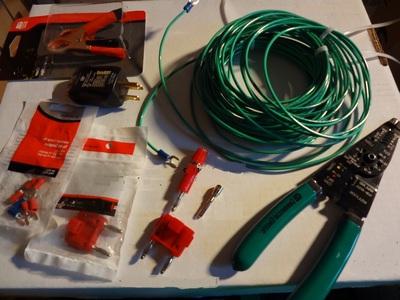In order to protect a person from the harmful effects of the properties of electricity, special protective devices are used : RCDs, fuses, circuit breakers (circuit breakers) and other safety equipment. The most popular human security system is the ground loop. This is a specific grounding device, the purpose of which is to connect with the "ground" the individual parts of electrical equipment. Or, in other words, electrodes (divertors) connected to each other in a horizontal and vertical plane, placed under a soil surface to a certain depth.
The loop resistance is affected by:
- type, structure and condition of the soil;
- electrode properties;
- the depth of the electrodes;
- number of electrodes.
Functionally grounding is divided into two types:
- Protective - designed to protect devices with electric traction from short circuits, people from the harmful effects of dangerous currents that occur at the time of a malfunction.
- Work - supports the required performance of the electrical installation through the grounding of its live parts.
Contouring process
Do not be afraid of the question of how to make a ground loop, because assembling it in practice does not cause serious difficulties. In the role of divertors for grounding, metal corners with a side width of 45 or 60 mm, pipes of various diameters can come up. The grounding scheme in the form of a triangle is good in that in case of a possible violation of the divertor connection in one of the lines, the parallel line remains in working condition.
Peaty
soil, loamy
type and clay with a high degree of humidity is best suited for the installation of the contour. The worst type of soil is rocky soil.
It is recommended to select a specific place to collect the ground loop, the zone near the switchgear can be considered the best place. The earthing switches shall be made of copper alloys or of black steel or galvanized without painting.
A trench is excavated in the form of a triangle with a shovel, sides of 3 meters, a small depth - 0.5-0.8 meters. At the top of the triangle, a steel ground electrode 2.5-3 meters long is hammered. The ends can be sharpened to make the metal easier to pass into the ground. Above ground, leave a little, up to 20 cm, weld to them a horizontal steel strip leading to a power electric shield. It will not be superfluous to treat the welding site with anti-corrosion paint or, for example, bitumen.

After installation, a ground loop measurement is performed, at which a control measurement of its resistance level is carried out. This is done by a device called a megaohmmeter. In the future, repeated measurements are done at least 1 time per year. To do this, through the grounding device, you need to close the artificial circuit with electric current, then make control measurements of the voltage drop in the circuit. An auxiliary electrode is placed next to the main electrode and connected to the source. Using a measuring device, near the zero potential, the voltage drop across the main electrode is recorded. With this method, the ground loop is measured more often than other methods.